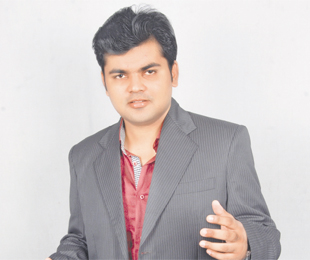Bangalore :
Little did Dr Swaminath G, a psychiatrist, know that a casual visit to an NGO working with tribals in Mysore district 17 years ago, would change the course of his life.Swaminath was shocked by what he saw: Tribals suffering from mental illness had nowhere to go and would wander deep into the forests, with danger lurking at every step.
His trysts with the wild have not stopped since. He holds free monthly psychiatric camps in association with the Swami Vivekananda Youth Movement, every second Sunday at Kenchenahalli, 80km from Mysore. “The camp caters to 40-50 persons suffering from mental illness,” he says.
Swaminath is also involved in Chittadhama, a residential rehabilitation centre for homeless persons with mental illness, 4km from HD Kote in Mysore district.
“With help from a group of psychiatrists, psychologists and psychiatric social workers, we rescue mentally ill homeless persons in this tribal land and other districts. At the centre, the patients are fed, cleaned and given new clothes. After initiating treatment, a search is launched for their families. The inmates are reintegrated with their families at the earliest,” he says.
Swaminath’s feats are legion in urban jungles too. He’s treated people who haven’t ventured out of their bathrooms for eight years. “One such patient, a lawyer, is likely to go back to his profession, thanks to the acceptance of his family and colleagues,” he adds.
From Halli to Halli
Dr Channakeshava TA, 43, a senior specialist with a government hospital in KGF, Kolar district, has a special love for villages. In his 15-year career, he’s never sought an urban posting. Dr Channakeshava, in fact, has made sure his services are restricted to villages, and travelled to many parts of the state to conduct medical camps. And he’s determined to stick to the itinerary.
So what drives Dr Channakeshava? “I’m a villager myself, from Mayanayakana Hosahalli in Ramanagaram district, so I choose to stay connected with them. As a child, I’ve seen villagers suffering and dying due to a lack of health facilities,” he added.
Dr Channakeshava says rural health service is not easy. “Just to answer nature’s calls, I’ve had to travel 2km. Forget medical equipment, there was no proper drinking water in many villages. These things discourage freshers, especially women, from venturing into rural areas,” he points out.
Channakeshava feels today’s doctors must not restrict themselves to special surgeries but also focus on implementing national and state health programmes on immunization, nutrition, sanitation awareness and potable water.
The ‘village doctor’ beams as he narrates how implementation of contraception programmes in villages in Tumkur and Kolar districts has resulted in many villagers going in for smaller families.
Addicted to de-addiction
Dr Vishal Rao US, consultant oncologist in Bangalore, makes it a point to vanish into the hinterland every now and then. With a team of like-minded doctors and in association with Satya Sai Seva Organisation, he conducts rural outreach programmes, especially on deaddiction, in Madanapalli and Tharanahalli in Andhra Pradesh and several parts of Karnataka.
Dr Vishal says they focus not only on the effect, but also the cause. “Over the years, healthcare focus in rural areas has been on delivering medical care. But seldom is the focus on the cause of the problems, such as smoking, chewing tobacco or alcohol. We could achieve much through counselling, preventive education and deaddiction activities,” he explains.
Vishal and his team create this awareness. “We go house to house and make power point presentations on the ill-effects of tobacco. Villagers are motivated into quitting the habit by discussing the associated diseases and economic burden of treating them. Counselling includes education on community health aspects of sanitation, diet and hygiene, which have a far-reaching impact on rural health,” he adds.
Dr Vishal says doctors should reach out to the rural masses as healthcare in cities is exorbitant. “For the rural patient, treatment includes travel expenses to the city and accommodation,” he says.
source: http://www.articles.timesofindia.indiatimes.com / The Times of India / Home> City> Bangalore> Villages / TNN / July 01st, 2013




